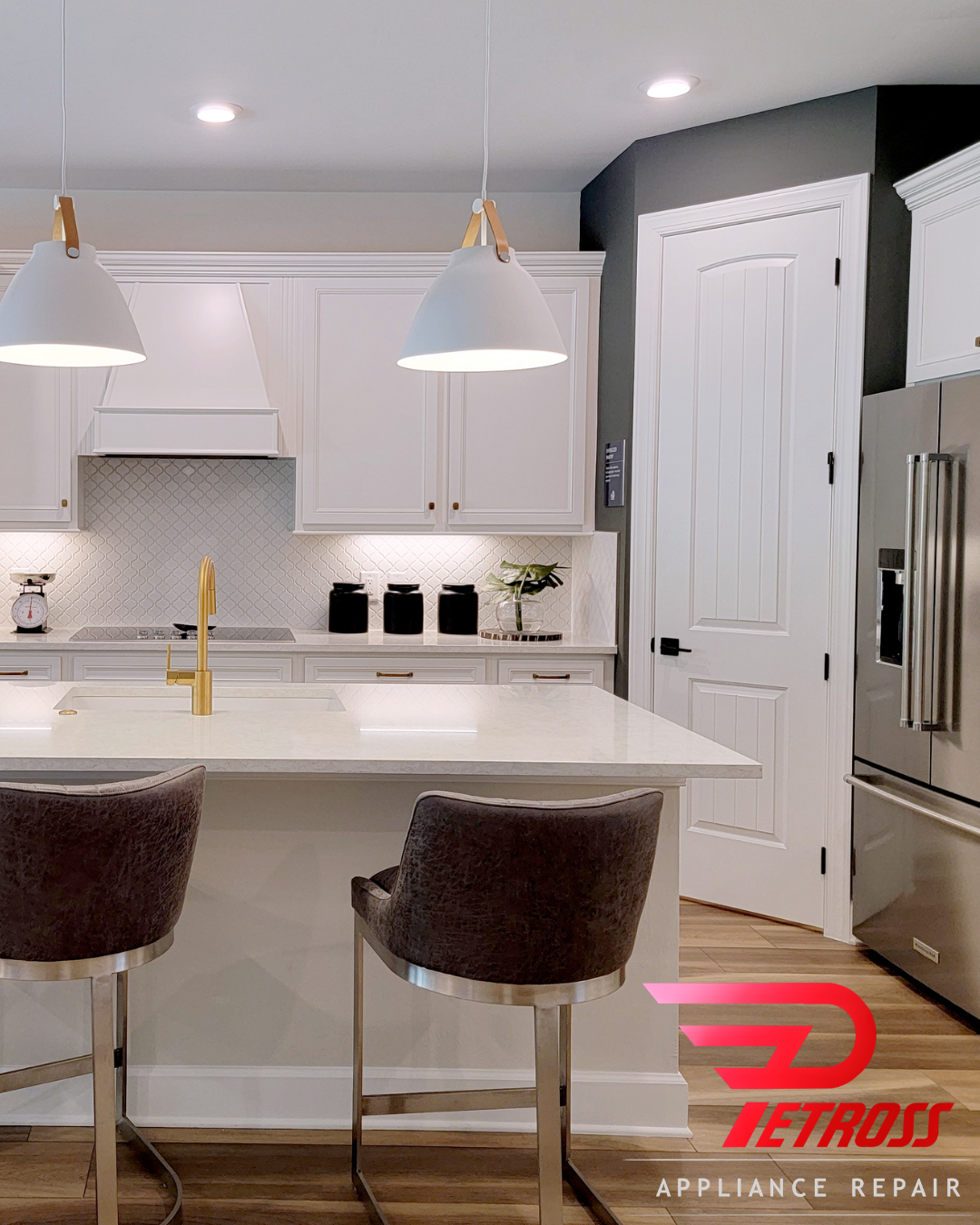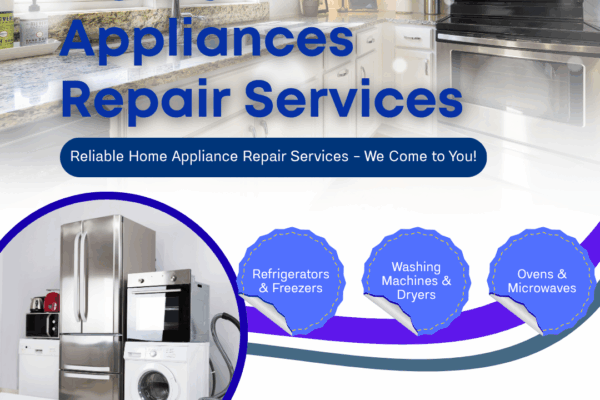
Energy Efficiency Tips: Save Money on Your Appliances This Spring
Energy-Saving Tips: Save Money on Your Appliances This Spring
What are the Best Energy-Saving Tips for Spring?
How Can I Reduce My Energy Consumption with Appliances?
What Simple Tips Can Help Me Save Energy?
How Do Energy-Saving Tips Affect My Energy Bill?
How to Make Your Home More Energy Efficient?
What Energy Efficiency Tips Should I Consider for My HVAC System?
How Can Ceiling Fans Help Save Energy?
What Role Do Air Filters Play in Energy Efficiency?
How Can I Optimize Energy Usage in Heating and Cooling?
What Are the Benefits of a Programmable Thermostat?
How to Use Air Conditioning Efficiently During Spring?
What Are the Best Practices for Reducing Cooling Costs?
How Can I Identify Energy Leaks in My Home?
What Are Common Sources of Air Leaks?
How Can I Use Blinds to Save Energy?
What Steps Can I Take to Seal My Home?
What Energy Solutions Are Available from My Energy Provider?
How Can I Access Energy-Saving Programs?
What Incentives Do Energy Providers Offer for Energy Efficiency?
How to Choose the Right Energy Provider for My Needs?
Energy-Saving Tips: Save Money on Your Appliances This Spring
As the days grow warmer and spring approaches, it’s the perfect time to consider energy efficiency strategies that not only help the environment but also reduce your energy bill. With the right energy-saving tips, you can optimize the use of your appliances and home energy systems to save energy and money. This article delves into practical advice on how to enhance your home’s energy efficiency, ensuring that your appliances operate at their best while minimizing energy consumption.
What are the Best Energy-Saving Tips for Spring?
How Can I Reduce My Energy Consumption with Appliances?
To effectively reduce your energy consumption with appliances this spring, start by investing in energy-efficient models, such as those bearing the Energy Star label. These appliances are designed to use less energy while providing the same level of performance as their less efficient counterparts. Additionally, consider unplugging appliances when they are not in use, as many devices consume energy even when turned off, a phenomenon known as phantom load. Regular maintenance, such as cleaning air filters in HVAC systems or ensuring your refrigerator’s coils are clean, can also significantly enhance energy efficiency, leading to lower energy bills.
Furthermore, utilizing appliances during off-peak hours, when electricity rates are typically lower, can contribute to significant savings. For instance, running your dishwasher or washing machine in the evening or early morning can help you take advantage of these lower rates. Additionally, be mindful of the settings on your appliances. For example, using cold water for laundry not only saves energy but also conserves water, making it an eco-friendly choice. Lastly, if your appliances are older, consider replacing them with newer, more energy-efficient models, which can lead to substantial long-term energy savings.
What Simple Tips Can Help Me Save Energy?
Simple energy-saving tips can have a remarkable impact on your household energy consumption. One effective strategy is to utilize natural light more during the day. Opening blinds and curtains allows sunlight to brighten your home, reducing the need for artificial lighting. Moreover, consider using ceiling fans to circulate air and keep your home cool without relying heavily on air conditioning. Setting your ceiling fans to rotate counterclockwise can create a wind-chill effect, making the room feel cooler, which is especially beneficial in the warmer months.
Another easy way to save energy is by adjusting your thermostat settings. During spring, you can set your thermostat a few degrees higher when you are home and even higher when you are away. This simple adjustment can lead to significant energy savings over time. Furthermore, using energy-efficient light bulbs, such as LED bulbs, can also contribute to lower energy consumption. These bulbs use less energy and last significantly longer than traditional incandescent bulbs, making them a smart choice for both your energy bill and the environment.
How Do Energy-Saving Tips Affect My Energy Bill?
Implementing energy-saving tips can have a direct and positive impact on your energy bill. By reducing energy consumption through efficient appliances and smart home practices, you can expect to see a noticeable decrease in your monthly costs. For instance, minor adjustments like turning off lights in unoccupied rooms or setting your water heater to a lower temperature can lead to immediate savings. Over time, these small changes accumulate, resulting in lower energy bills and increased overall savings.
Additionally, energy-efficient appliances typically consume less energy, which translates to reduced energy costs. When you invest in appliances that follow energy efficiency tips, you are not only contributing to a greener planet but also taking proactive steps to keep your energy bills in check. Furthermore, many energy providers offer incentives for households that engage in energy-saving practices, adding additional savings opportunities. By being conscious of your energy usage and making informed choices, you can significantly lower your energy bill while still enjoying the comforts of your home.
How to Make Your Home More Energy Efficient?
What Energy Efficiency Tips Should I Consider for My HVAC System?
Improving the energy efficiency of your HVAC system is crucial for maintaining a comfortable home while keeping energy costs low. Regular maintenance is key, including changing air filters every 1-3 months to ensure that your system runs smoothly and efficiently. Dirty filters can restrict airflow, causing your HVAC system to work harder and consume more energy. Additionally, consider scheduling annual inspections by a professional to assess the overall performance of your heating and cooling systems, which can prevent costly repairs and enhance energy efficiency.
Another effective tip is to install a programmable thermostat that allows you to set specific temperatures for different times of the day. This feature enables you to automatically adjust your HVAC system based on your daily routine, ensuring that energy is not wasted when you are not home. For instance, you can program your thermostat to cool your home before you arrive and raise the temperature when you leave, reducing energy consumption significantly. Moreover, sealing ducts and ensuring that your home is properly insulated can help maintain the desired temperature, further enhancing the efficiency of your HVAC system and contributing to lower energy bills.
How Can Ceiling Fans Help Save Energy?
Ceiling fans are a fantastic addition to any home, especially in the spring, as they offer a cost-effective way to save energy while maintaining comfort. By using ceiling fans, you can circulate cool air throughout your space, allowing you to raise your thermostat setting by several degrees without sacrificing comfort. This simple adjustment can translate to significant energy savings, as your air conditioning system will not have to work as hard to maintain a cool environment. Setting your ceiling fans to rotate counterclockwise helps create a cooling breeze, making any room feel more comfortable during warmer months.
Moreover, ceiling fans can be used in conjunction with your HVAC system, allowing you to save energy while keeping your home comfortable. It’s important to remember to turn off ceiling fans when you leave a room, as they cool people, not spaces. This habit not only conserves energy but also prolongs the lifespan of your fan. Additionally, choosing energy-efficient ceiling fans with the Energy Star label ensures that you are minimizing energy usage while maximizing airflow. By incorporating ceiling fans into your home, you can enjoy a cooler environment during spring while keeping your energy costs down.
What Role Do Air Filters Play in Energy Efficiency?
Air filters play a crucial role in maintaining energy efficiency within your home. They help improve indoor air quality by trapping dust, allergens, and debris, allowing your HVAC system to operate more effectively. When air filters are clean and functioning properly, your heating and cooling systems do not have to work as hard to circulate air, which can lead to lower energy consumption and reduced energy bills. It is, therefore, essential to regularly check and replace your air filters to ensure optimal performance and efficiency.
Using high-efficiency air filters can further enhance your HVAC system’s energy efficiency. These filters capture smaller particles, leading to cleaner air and reduced strain on your system. When the system is not overworked, it consumes less energy, contributing to overall energy savings. Additionally, maintaining clean air filters helps extend the lifespan of your HVAC equipment, reducing the need for costly repairs or replacements. By prioritizing air filter maintenance, you are taking a significant step towards improving your home’s energy efficiency and lowering your energy costs.
How Can I Optimize Energy Usage in Heating and Cooling?
What Are the Benefits of a Programmable Thermostat?
Investing in a programmable thermostat can greatly enhance your home’s energy efficiency by allowing you to customize your heating and cooling schedules. Unlike traditional thermostats, programmable models enable you to set specific temperatures for different times of the day, which means you can reduce energy usage when you’re not home or during sleeping hours. This feature not only ensures a comfortable environment upon your return but also contributes to significant energy savings, as your HVAC system won’t be running unnecessarily when it is not needed.
Moreover, many programmable thermostats come equipped with smart technology, allowing you to control your home’s temperature remotely through a smartphone app. This flexibility enables you to make adjustments on the go, ensuring that your home is always at the desired temperature while optimizing energy consumption. Some models can even learn your preferences over time, automatically adjusting settings for maximum efficiency. By incorporating a programmable thermostat into your home, you can enjoy a more efficient heating and cooling system while also keeping your energy bills in check.
How to Use Air Conditioning Efficiently During Spring?
Using air conditioning efficiently during spring involves a few strategic adjustments to your habits and settings. First, consider setting your thermostat a few degrees higher than usual and complementing your cooling system with ceiling fans. This combination allows for a comfortable environment without overworking your air conditioner. Additionally, ensuring that your home is well-insulated can help keep the cool air inside, reducing the workload on your air conditioning unit and minimizing energy consumption.
Another tip is to close blinds or curtains during the hottest parts of the day to block out direct sunlight, which can heat up your living spaces. This simple action can help maintain a cooler indoor temperature, allowing your air conditioning unit to run less frequently. Regular maintenance of your air conditioning system is also crucial; ensure that filters are clean and the unit is serviced before the hot weather sets in. By following these strategies, you can enjoy a cool home while still being mindful of your energy usage and costs during the spring months.
What Are the Best Practices for Reducing Cooling Costs?
Reducing cooling costs during the warmer months involves a combination of strategic practices and energy-saving tips. Start by setting your thermostat to the highest comfortable setting and using ceiling fans to help circulate air, which allows you to feel cooler without relying solely on your air conditioning system. Additionally, consider investing in energy-efficient windows or applying window films to block heat from entering your home. These measures can significantly lower your energy consumption and help keep your home cooler.
Furthermore, regular maintenance of your air conditioning unit is essential for optimal performance. Schedule professional inspections to ensure that your system is running efficiently, and replace air filters regularly to maintain airflow. Additionally, sealing air leaks around doors and windows can help prevent cool air from escaping, further enhancing your energy savings. By implementing these best practices, you can reduce cooling costs and improve your home’s energy efficiency, ultimately leading to lower energy bills.
How Can I Identify Energy Leaks in My Home?
What Are Common Sources of Air Leaks?
Identifying air leaks in your home is crucial for improving energy efficiency and reducing energy bills. Common sources of air leaks include gaps around windows and doors, unsealed ducts, and openings in walls where pipes or wiring enter. These leaks allow conditioned air to escape, forcing your HVAC system to work harder to maintain a comfortable temperature. To effectively find these leaks, perform a visual inspection and consider using a smoke pencil or incense stick to detect drafts.
Additionally, check for gaps in areas such as electrical outlets, baseboards, and attics, where air can easily infiltrate your home. Even small cracks can lead to significant energy loss over time. By identifying and sealing these leaks, you can improve your home’s energy efficiency and lower your energy consumption. Utilizing weatherstripping or caulk to seal gaps can be an effective and cost-efficient DIY solution, ultimately contributing to a more comfortable and energy-efficient home environment.
How Can I Use Blinds to Save Energy?
Using blinds strategically can significantly contribute to energy savings in your home. During the warmer months, closing blinds and curtains can block out direct sunlight, helping to keep your home cooler and reducing the need for air conditioning. This simple action can lead to lower energy consumption, especially during peak sunlight hours. Opt for light-colored blinds that reflect sunlight rather than absorb it, further enhancing their energy-saving capabilities.
Conversely, during cooler months, opening blinds to let sunlight in can help warm your home naturally, reducing the need for heating. It’s crucial to adjust your blinds according to the season and the time of day, maximizing the benefits they provide. Additionally, consider using insulated or thermal blinds, which can provide an extra layer of protection against heat loss or gain. By incorporating blinds into your energy-saving strategy, you can effectively conserve energy, improve comfort, and lower your energy bills throughout the year.
What Steps Can I Take to Seal My Home?
Sealing your home is a vital step towards enhancing energy efficiency and reducing energy costs. Start by conducting a thorough inspection of your home, looking for gaps and cracks around windows, doors, and other areas where air can escape. Utilize caulk or weatherstripping to seal these openings, ensuring that conditioned air remains inside and outside air is kept out. Pay special attention to areas like electrical outlets and plumbing penetrations, which are often overlooked but can contribute significantly to energy loss.
In addition to sealing gaps, consider adding insulation in your attic and walls, as inadequate insulation can lead to significant heat loss in winter and heat gain in summer. Installing door sweeps can also be an effective way to seal the bottom of doors, further preventing drafts. Finally, regularly check and maintain your home’s sealing measures to ensure they remain effective over time. By taking these steps to seal your home, you can achieve a more energy-efficient space, ultimately leading to lower energy consumption and savings on your energy bills.
What Energy Solutions Are Available from My Energy Provider?
How Can I Access Energy-Saving Programs?
Many energy providers offer energy-saving programs designed to help customers reduce their energy consumption and associated costs. To access these programs, start by visiting your energy provider’s website or contacting their customer service. They often provide information on available rebates, incentives, and energy efficiency programs that can help you save money while improving your home’s energy performance. Some providers may even offer free energy audits to identify areas for improvement in your home.
Additionally, take advantage of community programs that promote energy efficiency initiatives. These programs can provide valuable resources, including workshops and educational materials, to help you implement energy-saving tips effectively. Many energy providers also collaborate with local governments to offer financing options for energy-efficient upgrades, making it easier for homeowners to invest in energy-saving solutions. By exploring these resources, you can access a variety of energy-saving programs tailored to your needs, ultimately leading to lower energy costs and a more efficient home.
What Incentives Do Energy Providers Offer for Energy Efficiency?
Energy providers frequently offer incentives to encourage customers to adopt energy efficiency practices. These incentives may include rebates on energy-efficient appliances, financing options for home improvements, or discounts on energy audits. By taking advantage of these incentives, homeowners can significantly lower the upfront costs associated with upgrading their appliances or enhancing their home’s energy performance. Many programs are designed to promote the installation of energy-efficient HVAC systems, insulation, and windows, providing consumers with multiple pathways to achieve energy savings.
Moreover, some energy providers implement demand response programs that reward consumers for reducing energy use during peak demand times. Participating in these programs not only helps you save money but also contributes to a more stable energy grid. By staying informed about the incentives offered by your energy provider and actively participating in energy-saving programs, you can maximize your energy efficiency efforts and enjoy financial benefits while reducing your overall energy consumption.
How to Choose the Right Energy Provider for My Needs?
Choosing the right energy provider is vital for ensuring that you receive the best services and rates suitable for your energy consumption needs. Start by researching different providers in your area, comparing their rates, customer service reputation, and energy efficiency programs. Look for providers that offer flexible plans and incentives tailored to your specific energy usage patterns. Additionally, consider the provider’s commitment to renewable energy sources, as many consumers are increasingly prioritizing sustainability in their energy choices.
Furthermore, read customer reviews and testimonials to gauge the experiences of others with the provider. It can also be beneficial to inquire about any additional services, such as energy audits or support for energy-efficient upgrades, that may enhance your overall energy efficiency. By taking the time to evaluate your options and choosing a provider that aligns with your energy-saving goals, you can ensure that you are making an informed decision that meets your needs and contributes to lower energy costs.




